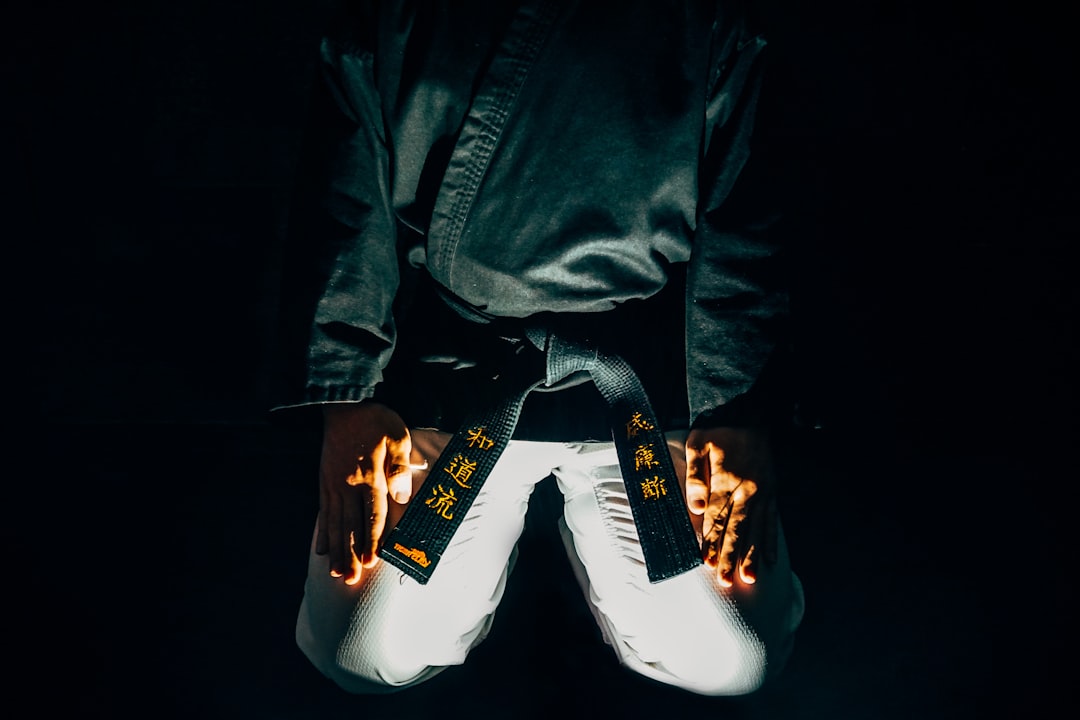To effectively train karate at home, create a clear, safe, and focused environment with open space, hard floors complemented by protective mats. A traditional karate Gi is essential for adherence to discipline and aiding in posture correction. For advanced techniques, focus mitts and a heavy bag can be valuable, while a mirror or wall helps monitor stances. Utilize quality online instructional materials for guided practice on stances like zenkutsu dachi and kiba dachi, replaying content as needed to perfect form. Incorporate bodyweight and plyometric exercises into your routine to build strength and endurance, with a focus on mobility-enhancing karate outfits like the Gi. Circuit training mimicking continuous practice will enhance aerobic capacity and power. Adapting drills for solo training, such as shadowboxing or using heavy bags, can simulate sparring and develop timing, rhythm, and adaptability. Regular self-recording and analysis of performance are crucial for improvement. Consistency, the right gear, and self-evaluation will lead to advanced proficiency in karate.
Embarking on a martial arts journey from home offers unique advantages, allowing you to practice karate at your own pace and convenience. This article serves as your guide to transforming a corner of your living space into a dedicated Karate dojo. We’ll explore how to set up a suitable training area, outfit yourself with the necessary gear for optimal performance, and develop a strength and endurance regimen tailored for Karate practitioners. Additionally, we’ll delve into leveraging online resources to master stances and movements, and provide insights on progressive techniques and sparring drills that can be effectively practiced solo. Whether you’re a beginner or an experienced karateka looking to refine your skills, this guide will equip you with the knowledge to train Karate efficiently at home.
- Setting Up Your Home Karate Training Space: Essential Equipment and Layout
- Mastering Karate Stances and Movements with Online Tutorials and Videos
- Building Strength and Endurance for Karate Practice: A Home Workout Routine
- Advancing Your Karate Skills: Progressive Techniques and Sparring Drills for Solo Training
Setting Up Your Home Karate Training Space: Essential Equipment and Layout
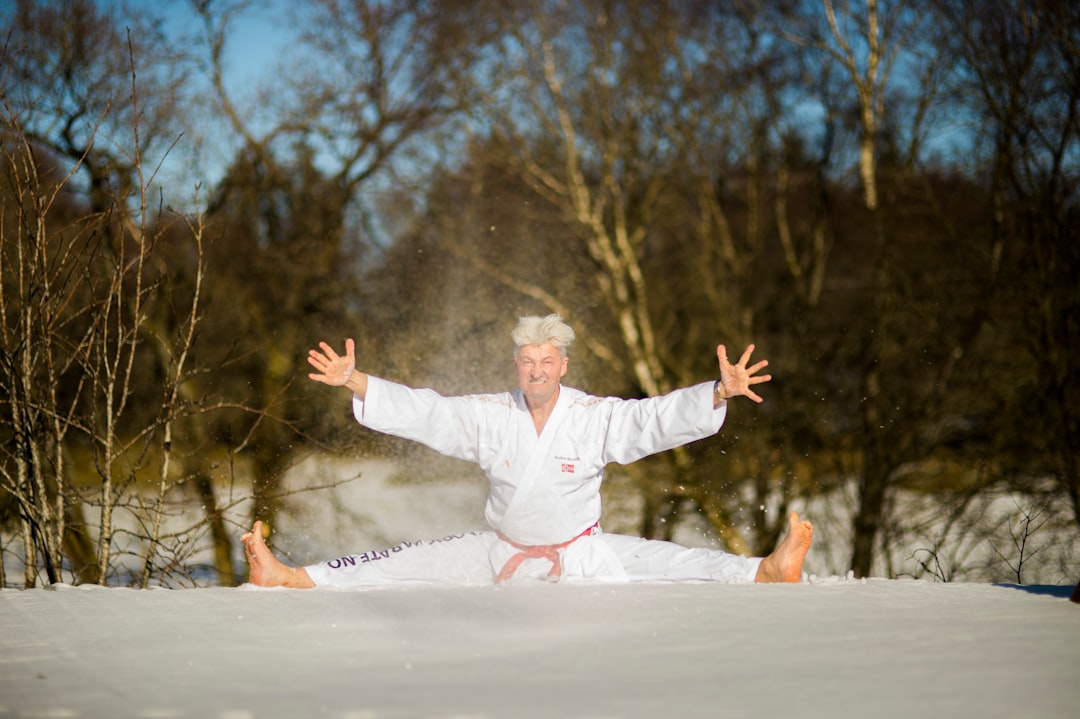
To effectively train karate at home, it’s crucial to have a dedicated space that accommodates your movements and allows for proper focus. Begin by designating an area in your home that offers enough space to practice without obstruction. This area should be clear of furniture and other potential hazards to prevent injury during practice. Ideally, you’re looking for a room or a corner of a room with hard floors, as mats can be placed down for additional cushioning and safety.
In terms of essential equipment, you’ll need a proper karate outfit called a Gi, which is the traditional uniform worn in karate practice. The Gi helps to promote the correct posture and allows your sensei or training videos to evaluate your form during exercises. Additionally, you should invest in a focus mitt for partner drills if practicing with someone at home. A heavy bag can also be beneficial for striking techniques, though it’s not mandatory for solo practice. Ensure you have a wall or free-standing mirror to check your stances and posture, as well as a clock or timer for timing exercises and rounds. Questions about your training space setup can often be answered by considering the flow of movement and ensuring there is enough room to execute all karate techniques safely and effectively. A well-set up home training space will facilitate both your learning and your growth in the art of karate.
Mastering Karate Stances and Movements with Online Tutorials and Videos
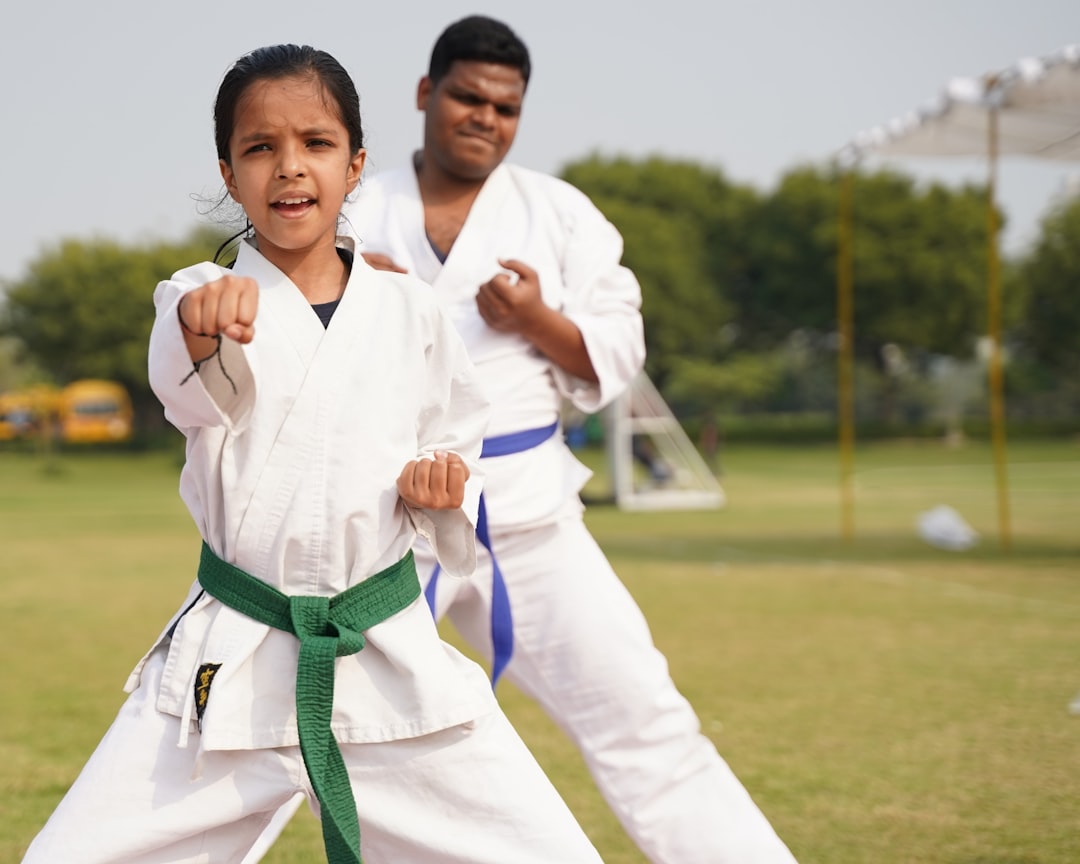
Practicing karate stances and movements at home can be an effective way to refine your technique, provided you have access to quality instructional materials. With the advent of online tutorials and videos, karateka of all levels can now learn from the comfort of their own homes. These resources often feature instructors demonstrating proper form and alignment, which is crucial for executing stances like zenkutsu dachi (front stance) and kiba dachi (horse riding stance) with precision. By following along with these step-by-step videos, you can ensure that your posture and movement are both correct and consistent, key elements in mastering karate. Online platforms also allow you to replay sections as needed, which is particularly helpful when trying to perfect a specific technique or understand the nuances of balance and body positioning. Is a karate outfit called? Yes, a karate outfit is specifically called a ‘gi’ or ‘keikogi’. It is designed to facilitate movement and allow for full range of motion during practice, making it an essential part of your training gear. When selecting a gi, look for one that fits well and feels comfortable as you execute various stances and movements. By incorporating these online resources into your home training regimen and donning the appropriate karate outfit, you can effectively train karate stances and movements, moving closer to achieving mastery in this disciplined martial art.
Building Strength and Endurance for Karate Practice: A Home Workout Routine
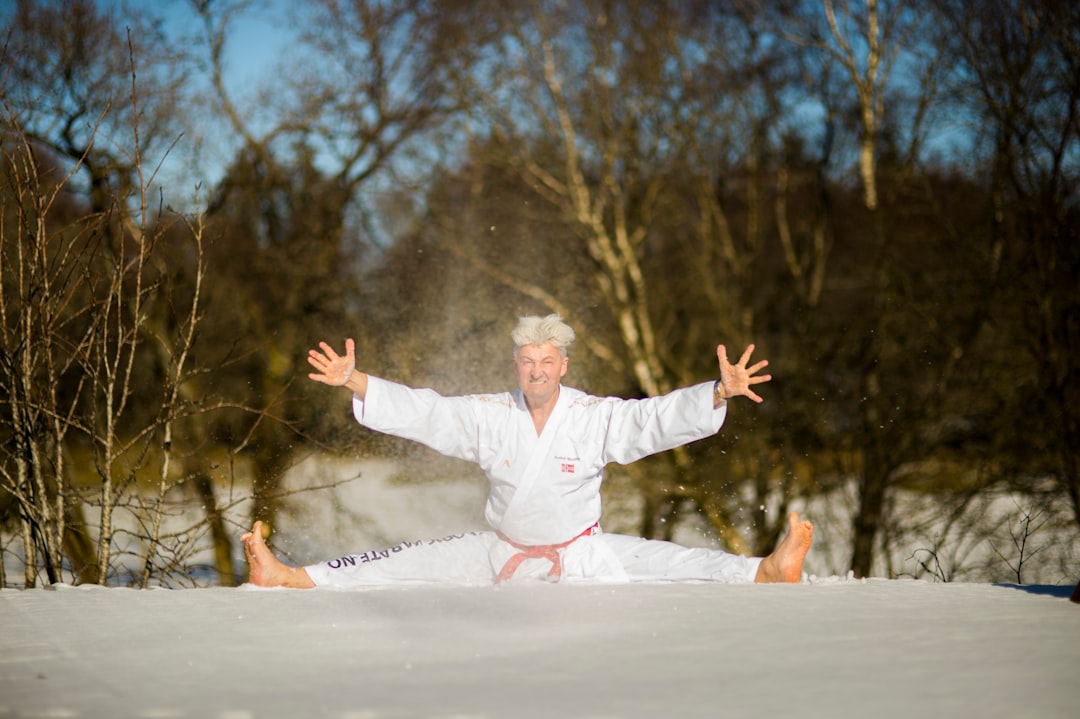
Building strength and endurance are fundamental components for any karate practitioner, whether they train at a dojo or at home. To effectively train for karate at home, incorporating a routine that focuses on both muscular and cardiovascular conditioning is key. Begin by outfitting yourself appropriately; ensure you’re wearing comfortable clothing that allows for full range of motion, such as a well-fitted karate outfit. What kind of exercises should you include in your home workout routine to enhance your strength and endurance for karate practice? A variety of bodyweight exercises, like push-ups, squats, and planks, are excellent for building foundational strength. Incorporating these into your regimen will help you execute kicks and blocks with greater power and stability. Additionally, plyometric exercises such as burpees, jump squats, and high knees can improve explosive power and cardiovascular endurance, which are crucial for maintaining energy levels during longer training sessions or competitions.
For endurance, engage in circuit training that combines these exercises with minimal rest between sets to keep your heart rate up. This will simulate the aerobic demands of practicing karate continuously. In terms of strength training specifically for karate, focus on exercises that mimic the movements used in karate, like deadlifts for hip power and pull-ups or lat pulldowns for strengthening the back and shoulders, which are vital for blocking and striking techniques. Remember, consistency is paramount; dedicate time each day to this routine, and over time, you’ll notice an improvement in both your strength and endurance, directly benefiting your karate practice at home.
Advancing Your Karate Skills: Progressive Techniques and Sparring Drills for Solo Training
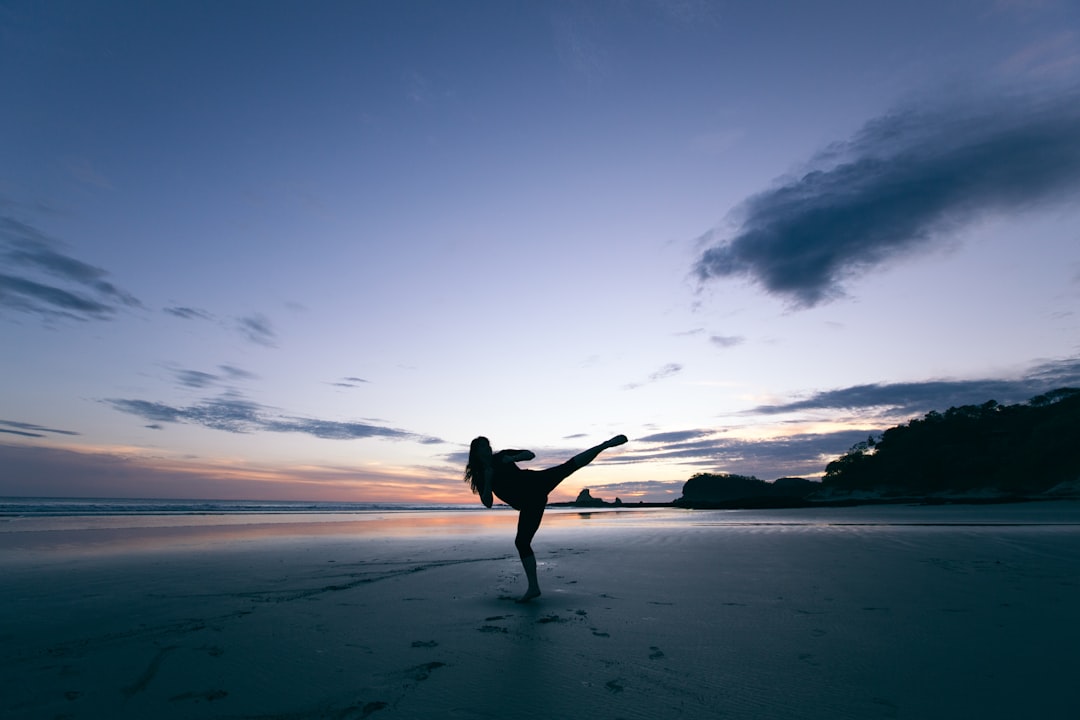
As you advance your karate skills from the comfort of your home, incorporating progressive techniques and sparring drills tailored for solo training is key. To begin with, mastering the basic stances and movements is foundational. Once these are refined, you can progress to more complex kata, which are choreographed sequences of movements that embody the essence of karate’s philosophy and technique. Are these kata performed with precision and focus? They should be, as each movement within them is designed to enhance your balance, coordination, and understanding of karate principles.
For those practicing without a partner, sparring drills can be adapted to simulate real combat scenarios. Shadowboxing, for instance, allows you to visualize and execute punching and kicking combinations in the air, improving your timing and rhythm. Additionally, setting up obstacles or using a heavy bag can mimic the reactions of an opponent, providing a dynamic training environment that tests your adaptability and power. How can you make these drills effective? By consistently practicing them with dedication and by adjusting your technique based on feedback from videos of your performance. This self-analysis will lead to refined form and technique, bringing you closer to the proficiency you seek in your karate practice. Remember, the key to advancing your skills at home lies in your commitment to regular practice and a critical eye towards self-improvement. What gear or equipment can aid in this process? A proper karate outfit, which includes a gi for training and appropriate footwear, will ensure you have the necessary attire to perform each technique with optimal form and comfort.
Incorporating karate into your home routine is a rewarding endeavor that can be effectively achieved with the right guidance and dedication. By setting up a dedicated training space equipped with necessary items like a proper mat, focus mitts, and your karate outfit called Gi, you lay the foundation for rigorous practice. Utilizing online tutorials and videos to master stances and movements ensures technique is honed accurately. A targeted home workout routine focusing on strength and endurance further complements your training regimen. As you progress, engaging in solo sparring drills and incorporating advanced techniques will not only enhance your skill set but also prepare you for when you can return to a dojo or participate in formal competitions. Remember, consistent practice and a disciplined mindset are the keys to mastering karate at home.
